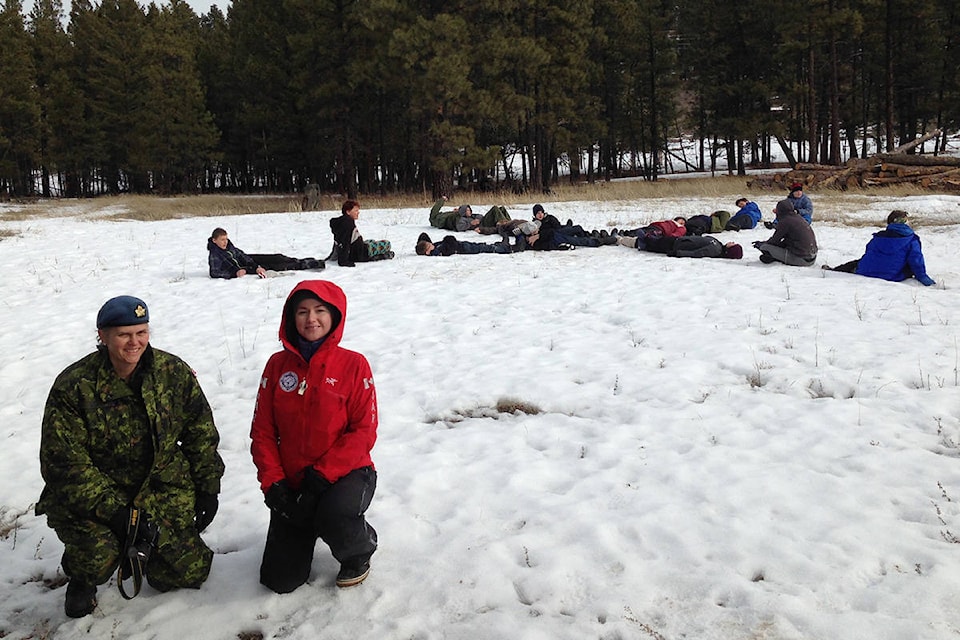Cranbrook senior and junior cadets with the 552 Key City Royal Air Squadron recently got the chance to learn survival training techniques at the local rod and gun club where they learned how to build fires and shelters and proper radio communications and ground signals.
What the senior cadets thought was an afternoon hike turned into a survival scenario when they were informed they were not returning to base. Arriving at a predestined location, the cadets were informed that they were simulated victims of a plane crash between Calgary and Cranbrook with an aircraft that had lost power, communications and had an engine failure.
According to the scenario, the group had lost all radio communications, the weather was coming in fast and that a search wasn’t going to be launched until the next day.
With those details, the group had to figure out survival priorities with limited resources and guidance from the supervising officer.
After overnighting and cleaning up their camp, the cadets were also instructed to make ground signals and hope a plane flew over.
Fortunately, for their sake, the Civil Air Search and Rescue Association were silent partners in the exercise and had been working with the 552 Key City Royal Air Squadron to assist with their cadet training.
A CASARA pilot and spotter were given the approximate location of the cadets and searched the area from the air, while the cadets on the ground had to find a way to signal the plane.
The plane made several passes, however, the occupants were unable to spot the ‘missing’ cadets on the ground.
The group moved to a larger clearing and when they spotted the plane, used movement such as waving scarves and jackets and reflective mirrors to be successfully seen by the aircraft.
Returning to base, the junior cadets got the chance to get involved and were led to an open field where they could have an opportunity to be spotted by the CASARA plane.
Without any materials to signal the aircraft, the juniors laid down to form a giant ‘X’ in the snow but they weren’t spotted by CASARA.
At the next pass, the juniors decided to try movement which resulted in a successful rescue.
Both the cadets and the CASARA volunteers met together for a debriefing after the exercise to compare notes and discuss the use of signalling devices.
During the debriefing, both the cadets and the CASARA volunteers were amazed at how the survivors on the ground looked like boulders and logs in arial photos that were taken from the plane. Cadets also learned that being spotted from a plane isn’t as easy as it may seem and that it is important to use a few different signalling styles.
CASARA is a national non-profit volunteer organization that provides search and rescue assistance to the military and promotes flight safety.
Allister Pedersen, Cranbrook CASARA Training Officer, says joint training exercises between the Air Cadets and CASARA are perfect opportunities for both organizations.
On one hand, the cadets learn how to stay out of trouble, but if they are involved in a scenario where a plane has gone down, they’ll be able to survive and attract the attention of CASARA crews who are conducting searches from the air.
At the same time, Air Cadets learned about opportunities to join CASARA after they turn 19 years old and act as pilots, spotters, navigators or ground support.
For the exercise, CASARA provided classroom training and field training focused on using signalling mirrors, ground signals and other methods of attracting the attention of search aircraft.
